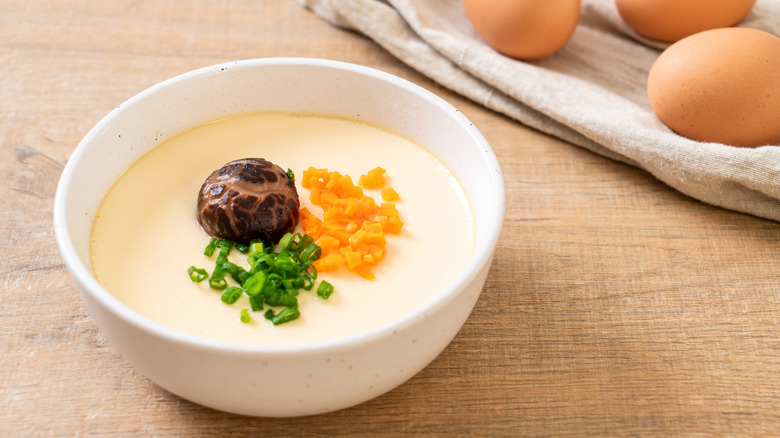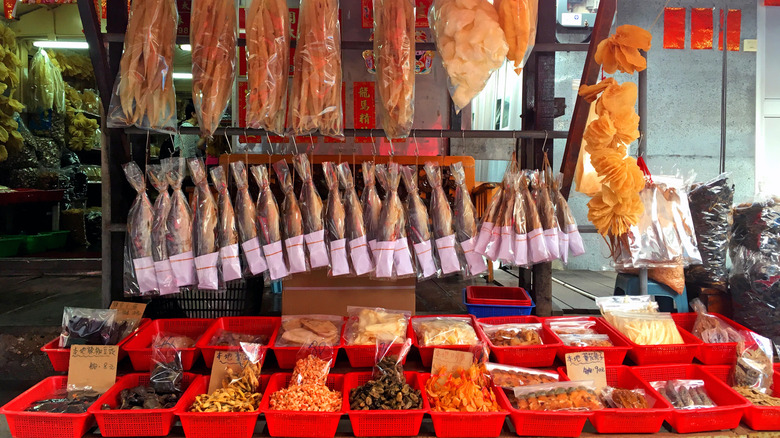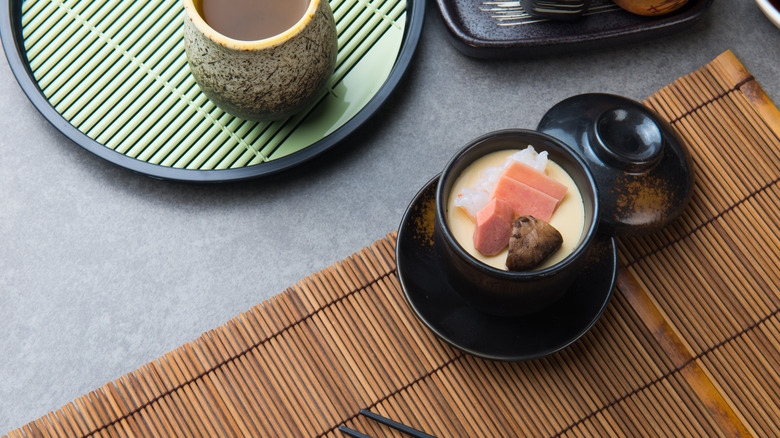The Umami Bomb Hidden In Traditional Steamed Eggs
Steamed eggs are a culinary tradition you can find around East Asia, from as far north as Japan, to all the way south toward Thailand and Vietnam. Unlike the dessert custard you might find in Western cuisines, such as Pastéis de nata, Asian steamed egg dishes are savory. Nutritious, economical, and simple to make, steamed eggs are a protein-forward favorite for home cooks.
However, just because the basic recipe is simple doesn't mean steamed eggs are boring. In fact, it varies quite a bit based on regional and national preferences. In Chinese cuisine, steamed eggs are often studded with additional ingredients and seasonings to boost their umami and flavor, and one of the best ways to do so is to use dried scallops or mushrooms.
The tradition of drying shellfish and other seafood is native to the southern Chinese coast, particularly in Hong Kong, where the former British colony was a trade hub between China and Southeast Asia. The city is well known for its dried seafood stores, where purveyors sell many dried seafood, mushrooms, and medicinal herbs. Among them, the dried scallop and dried mushrooms are the most popular.
Making Chinese style steamed eggs
Thanks to modern packaging and global trade, you can easily find dried scallops and mushrooms in Asian groceries or online. To make umami-packed steamed eggs, you will need several large eggs, a handful of dried scallops and dried mushrooms, soy sauce, toasted sesame oil, and finely chopped chives or scallions.
First, place the dried goods in a heat-proof bowl and pour boiling water over them. Cover and let it soak for at least 20 minutes. Once softened, shred the scallops and chop up the rehydrated mushrooms. Do not discard the soaking liquid, as that is where half the flavor resides. Instead, add cold water to the soaking liquid until you have one cup for every two eggs. If there is dirt or other undesirable particles, pass the liquid through a fine sieve before adding it to the eggs and whisk them together.
Add the scallops and mushrooms to the egg mixture and pour it into the heat-proof deep dish or bowl. Put it in a steamer (or an appliance of your choice) until it is set. The texture should be close to silken tofu. While steaming, heat soy and sesame oil in a pan until sizzling; pour it over the firmed egg and garnish with chopped scallions or chives. Serve with fresh rice and stir-fried vegetables for a taste of everyday Chinese cooking. Omit the scallops for a vegetarian version.
Other Asian steamed egg dishes
In countries outside China, steamed egg dishes are served in various ways. In Japan, where steamed eggs are called chawanmushi, whisked eggs are mixed with dashi and poured into small lidded ceramic cups. Additional ingredients such as soybeans (shelled edamame), seafood, and mushrooms are placed into the cups before the egg mixture is poured in. Chawanmushi can be served as an appetizer or as part of a main meal with rice.
In Korean cuisine, steamed egg is called Gyeran-jjim and it is made in a thick ceramic bowl directly on the heat, although you can also make it with a steamer or microwave. Mix whisked eggs with chopped scallion and chicken broth until smooth and pour into a pre-oiled bowl to prevent sticking. The egg would puff up in volume during the cooking process, so do not fill the bowl to the brim. Garnish with sesame oil, some more chopped scallions, and it is ready to serve.



